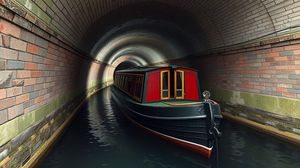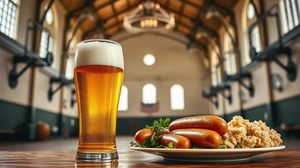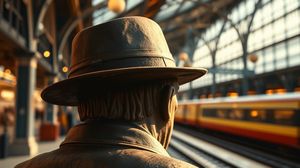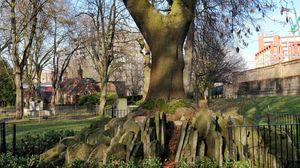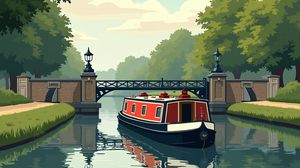
The London Canal Museum in King's Cross offers a unique glimpse into the rich history of London's waterways and presents a captivating exploration of the development and influence of the city's canal network. Located in a former ice warehouse built around 1862, the museum provides a fascinating insight into a lesser-known aspect of London's past.
The museum gives visitors the chance to understand the significance of canals in the industrial revolution, highlighting how these waterways were once the arteries of London's trade and transport. This focus on canal heritage offers an intriguing perspective on a vital part of London's history that often gets overshadowed by its more famous landmarks.
Visitors can discover the story of ice cream as part of the museum's unique exhibits. The building itself was originally used by Carlo Gatti, a Swiss-Italian entrepreneur, who imported ice from Norway and distributed it to London's ice cream makers, enhancing its use and popularity during Victorian times.
Another captivating artifact is the museum's vintage narrowboat cabin, which provides a snapshot of life on the canals. It helps visitors understand the lived experience of boat families who traveled and worked along the waterways, sharing cramped and colorful spaces as their homes.
The museum offers an impressive selection of historical photographs and models that vividly illustrate the evolution of canal technology and the dynamic changes in their use over the years. These displays allow visitors to appreciate the engineering marvels of the past alongside the social histories of the people who worked on and around the canals.
For those intrigued by unusual tales, the museum hosts the original Victorian ice wells beneath its floors. These cavernous wells once stored thousands of tons of ice harvested from frozen lakes in Norway, showcasing a remarkable story of early refrigeration techniques that were ahead of their time.

Making the Most of Your Visit:
Make sure to spend some time exploring the ice wells beneath the museum. These are often overlooked but truly fascinating as they highlight the innovative early refrigeration techniques used in Victorian times. It really gives a unique perspective on how these canals played a role in the industrial history of London.
If you're visiting with kids, the museum has some fun interactive exhibits that they might enjoy. The narrowboat cabin, for instance, is a brilliant little time capsule, so encourage them to explore and ask questions about how it might have been to live on one of these boats.
Take a moment to appreciate the building itself. Originally an ice warehouse, the architecture and design offer clues to its original purpose. This historical context adds another layer of interest beyond just the exhibits within.
For photography enthusiasts, the historical photographs and models are a treasure trove. Try to capture the contrast between the old and new aspects of London life as seen through these captivating displays. It's a good way to create unique and evocative photographs of your visit.
Before you leave, consider taking a short walk along the nearby Regent's Canal. It's a wonderful way to see these historical waterways in action and offers a peaceful escape from the bustling city streets of King's Cross.

Visiting Times & Costs:
The London Canal Museum is open to the public throughout the year with varying hours. Generally, the museum is open from Wednesday to Sunday. It's advisable to check for any special opening times during holidays or specific events.
| Day | Opening Hours |
|---|---|
| Wednesday - Sunday | 10:00 AM - 4:30 PM |
Admission fees are applicable, with different rates for adults and concessions. The current admission costs are:
- Adults: £6.00
- Concessions (students, seniors): £5.00
- Children (under 5): Free
- Family Ticket (2 adults + 2 children): £14.00
Regarding accessibility, the museum provides a generally accessible environment for visitors. Although the exhibit areas are accessible, some parts, such as the Victorian ice wells, may present challenges for those with mobility impairments as they are accessed via a staircase. It is advisable for visitors requiring assistance to contact the museum in advance to confirm current accessibility arrangements and receive the best advice on their visit.

Address & Map:

Nearby:






